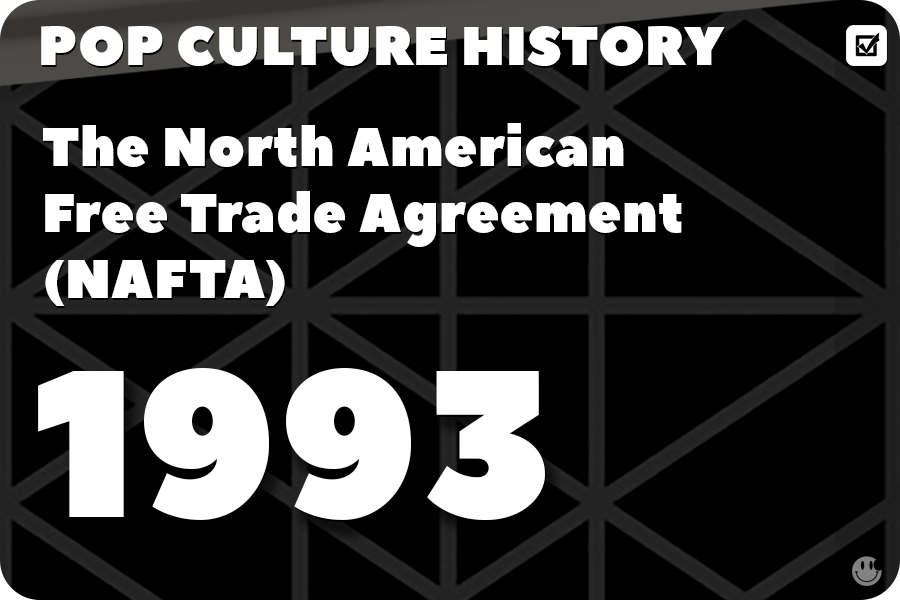 |
The North American Free Trade Agreement (NAFTA) |
The North American Free Trade Agreement (NAFTA) is a trilateral trade agreement between the United States, Canada, and Mexico that took effect on January 1, 1994, to eliminate trade barriers and foster economic cooperation among the three countries. The idea for NAFTA originated in the late 1980s when the U.S. and Canada began discussing a free trade agreement. After negotiations between the two countries, the Canada-United States Free Trade Agreement (CUSFTA) was implemented in 1989. Mexican President Carlos Salinas de Gortari, seeking to modernize Mexico’s economy, expressed interest in joining a trilateral trade agreement. Negotiations between the three countries began in 1990, led by U.S. President George H.W. Bush, Canadian Prime Minister Brian Mulroney, and Mexican President Carlos Salinas. After two years of talks, the leaders signed the NAFTA agreement on December 17, 1992. It was then ratified by the legislatures of each country in 1993, with U.S. President Bill Clinton signing the agreement into law on December 8, 1993. NAFTA eliminated most tariffs on goods traded between the three countries and established rules for investment, intellectual property rights, and dispute resolution. The agreement aimed to increase cross-border trade and investment, boost economic growth, and create jobs in all three countries. However, NAFTA has faced criticism over the years for its impact on job losses in certain industries, particularly manufacturing in the United States, and for its environmental effects. In 2018, NAFTA was renegotiated and replaced by the United States-Mexico-Canada Agreement (USMCA), which aimed to address some of the concerns raised about the original agreement. The USMCA entered into force on July 1, 2020. |









